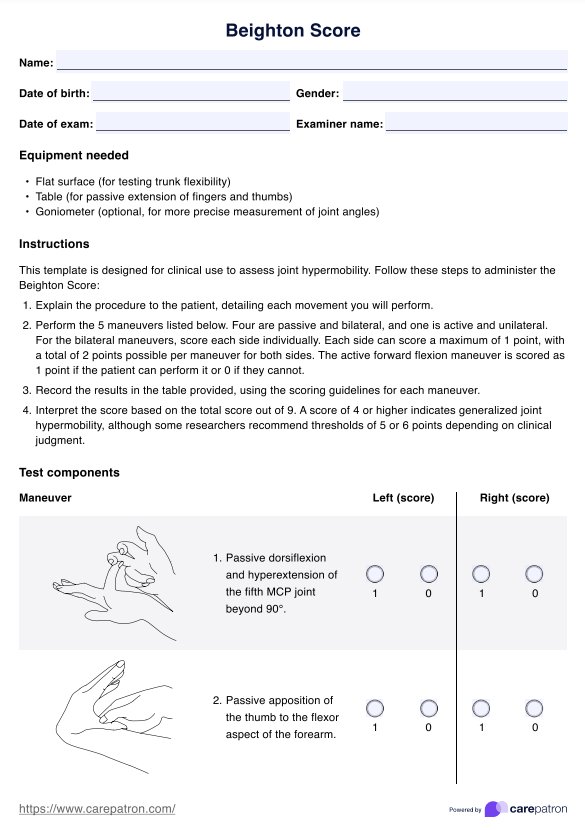A normal Beighton Score ranges from 0 to 3, suggesting no significant joint hypermobility. Most individuals within this range exhibit typical joint mobility.

Beighton Score
Assess joint hypermobility efficiently with our Beighton Score Template. Download the free PDF for accurate clinical evaluation, scoring, and interpretation.
Use Template
Beighton Score Template
Commonly asked questions
A Beighton Score of 6 indicates possible joint hypermobility, which may require further evaluation, especially if the patient presents with symptoms like joint pain or knee instability.
Yes, it is possible for children to have Ehlers-Danlos syndrome (EDS) with a low Beighton Score, as the condition encompasses various subtypes. A low score does not exclude the possibility of EDS.
EHR and practice management software
Get started for free
*No credit card required
Free
$0/usd
Unlimited clients
Telehealth
1GB of storage
Client portal text
Automated billing and online payments











